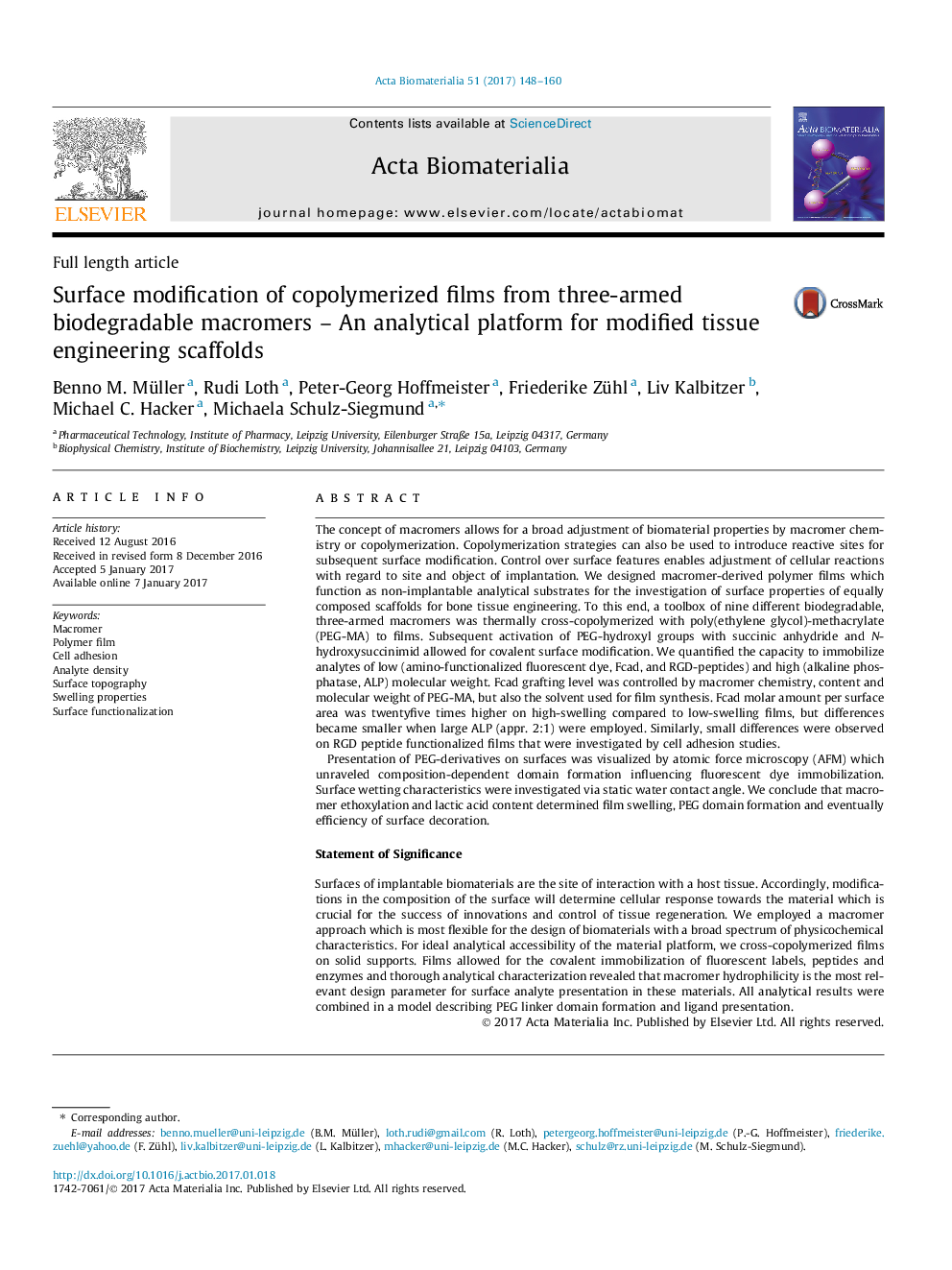| کد مقاله | کد نشریه | سال انتشار | مقاله انگلیسی | نسخه تمام متن |
|---|---|---|---|---|
| 6449470 | 1415935 | 2017 | 13 صفحه PDF | دانلود رایگان |
The concept of macromers allows for a broad adjustment of biomaterial properties by macromer chemistry or copolymerization. Copolymerization strategies can also be used to introduce reactive sites for subsequent surface modification. Control over surface features enables adjustment of cellular reactions with regard to site and object of implantation. We designed macromer-derived polymer films which function as non-implantable analytical substrates for the investigation of surface properties of equally composed scaffolds for bone tissue engineering. To this end, a toolbox of nine different biodegradable, three-armed macromers was thermally cross-copolymerized with poly(ethylene glycol)-methacrylate (PEG-MA) to films. Subsequent activation of PEG-hydroxyl groups with succinic anhydride and N-hydroxysuccinimid allowed for covalent surface modification. We quantified the capacity to immobilize analytes of low (amino-functionalized fluorescent dye, Fcad, and RGD-peptides) and high (alkaline phosphatase, ALP) molecular weight. Fcad grafting level was controlled by macromer chemistry, content and molecular weight of PEG-MA, but also the solvent used for film synthesis. Fcad molar amount per surface area was twentyfive times higher on high-swelling compared to low-swelling films, but differences became smaller when large ALP (appr. 2:1) were employed. Similarly, small differences were observed on RGD peptide functionalized films that were investigated by cell adhesion studies.Presentation of PEG-derivatives on surfaces was visualized by atomic force microscopy (AFM) which unraveled composition-dependent domain formation influencing fluorescent dye immobilization. Surface wetting characteristics were investigated via static water contact angle. We conclude that macromer ethoxylation and lactic acid content determined film swelling, PEG domain formation and eventually efficiency of surface decoration.Statement of SignificanceSurfaces of implantable biomaterials are the site of interaction with a host tissue. Accordingly, modifications in the composition of the surface will determine cellular response towards the material which is crucial for the success of innovations and control of tissue regeneration. We employed a macromer approach which is most flexible for the design of biomaterials with a broad spectrum of physicochemical characteristics. For ideal analytical accessibility of the material platform, we cross-copolymerized films on solid supports. Films allowed for the covalent immobilization of fluorescent labels, peptides and enzymes and thorough analytical characterization revealed that macromer hydrophilicity is the most relevant design parameter for surface analyte presentation in these materials. All analytical results were combined in a model describing PEG linker domain formation and ligand presentation.
345
Journal: Acta Biomaterialia - Volume 51, 15 March 2017, Pages 148-160
